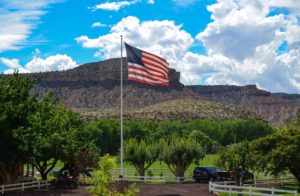
We are also located right next to the Lac du Flambeau Reservation, and more Native Indian people serve in the military per capita than any other ethnic group, including whites. Both my grandfathers served, as did almost every one of their generation, and my great uncle lost his life in WWII. One of my other great uncles was shot down and held as a POW. His injuries stayed with him his whole life. Service is about sacrifice.
Veterans get this special day because when they volunteer to serve, they are signing up to make the ultimate sacrifice, if required. For a while there, the military was seeming like a pretty easy way to get some societal advantages like a college education and preferential federal job placement. Not so much anymore. Besides, even in a prolonged time of peace, those who enlisted still were signing up to put their life on the line if called upon.
Of course, some people could not fathom going into the military. Combat training is not for them, and they may be morally opposed to war.There have been many other ways Americans have served. I am grateful for the teachers, policy makers, environmentalists, doctors, infrastructure workers… the list of dedicated Americans goes on and on.
After having one of the most divisive elections in history, I think it is important to think about service to our country. We should use the Vets as an inspiration and look up to them to think about what we can give to make the world a better place. This last year, we have seen people who “take the knee” for the National Anthem because they feel we, as a country, could be doing more.
Maybe it is sacrilegious to say this on Veterans Day, but I have been thinking a lot about the Pledge of Allegiance. It may have started while watching Game of Thrones, and seeing different kingdoms pledge to stand by this fictional leader or that, no matter what. Some swore their sword, but then do not fulfill their obligations. I wonder how many Americans have said the Pledge of Allegiance thousands of times, yet threatened to move to Canada if there was either this outcome or that? It is sort of like wedding vows, where people gather all their favorite witnesses together as they swear they will give their lives to this other person, then go roll in the hay with the next person who temps them. What are you swearing to sacrifice?
This is why Veterans Day is so important. Vets really do stand by a commitment and serve. There is no not following through for them. The do go to war when called upon. They together, black, white, Indian, man, woman, Jew, Christian, Muslim, rich and poor, are willing to do their best and if need be, put their life on the line so we can have a society that represents freedom for all.
So let’s use this day not only to thank Vets but to remember that America is a place that is intended to shine as a beacon of hope across the world. We represent inclusive policies, wise conservation policies, a place where our public has the right to visit some of the most spectacular scenery in the world, and of course, unprecedented opportunity and freedom to speak out. So find a vet today and thank them. Let them know what you are willing to do to help make America shine as a global symbol of freedom. What you are willing to do to protect the values that they put their life on the line for.
Thank you Veterans for your service and example of leadership!
Keep Leading,
Rad
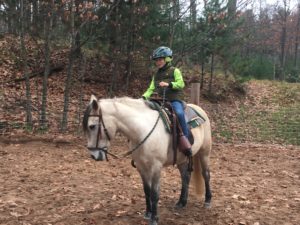
Propel Yourself to New Levels
Last month, I went to a 1-day riding clinic which was pretty much a waste of time, but did end up propelling me to new levels of riding. It wasn’t that the instruction was so good, in fact, I thought it was pretty bad and I came home feeling like I knew nothing. After a few days of thinking I that I was just a horrible horse trainer, I decided that was not true and I began to increase the amount of time I worked with my horse Ranger, the way that we have been working, using a style that has been working for us.
I have to say, I was a little harder on Ranger and he rose to the challenge. I rode him in a bit, which is a piece of metal in the mouth of the horse and if used properly is not a cruel device at all. A bit is used by 99% of people who ride horses, but there are alternatives. Because Ranger had a rough start when he was a little guy, and because he was pretty mistrusting, I had often used a “bitless bridle” for Ranger, something that seemed to put him at ease.
Ranger rose to the challenge of having a bit in his mouth again, and did well dropping his head, tucking his chin, and moving all the individual body parts I asked him to. After several days of intense training (by our standards), Ranger began to plateau. He was cooperative, but it seemed like he was being pushed.
Horse Personality
I like my horses “alive” and to have personality. I like them to be safe and obedient, but to still be who they are. I let Ranger have another go at the bitless bridle and boy did he seem to appreciate it. Ranger was gentler that he had been with the bit, calmer, and had more of what cowboys call “try”.
My kids have both started to ride Ranger and have figured out that they can control him without getting hurt or hurting him. My son, 8 years-old, actually just started riding for the first time on his own and he LOVED IT! This just made me so happy because I love horses and invest a lot of time and family resources into them. To share the joy I get, with my family, would mean the world to me.
Lessons Learned
So here is what I learned this summer and how it can be applied to any situation in life. There will be times where some well-meaning soul will try and teach you something and tell you you’re doing it all wrong. Take what you can from these people, but never stop trusting in yourself and using what works for you. It is important to get outside advice, but I know from life coaching that as coaches we are not supposed tell someone how to do something, but rather help them on a journey of self-exploration. Look inward to judge yourself and see if you can do it better, but believe in yourself and trust in your talents.
Next, look to your team for feedback and make sure you are taking care of them the way they want to be taken care of. Sometimes there are external pressures for how you should treat your team, what they should be allowed and what kind of benefits they should get. However, if you want to really invest in your team, take care of them they by asking them what they need. A team member will tell you how they like to work. If you make a working environment a pleasurable place to work and build a trusting relationship, you will get a 100% return on your investment.
So there it is, a little tip from a Fall Northwoods horse training session. Trust in your ability and take care of your team. Next thing you know, you will be the kind of leader you have always wanted to be.
Keep leading,
Rad

The Real World
I didn’t have a pleasant school experience until the later years of college due to my different learning style, but being involved with school policy and helping schools to break the old mold is now very interesting to me. Schools are a great place to look at why we have certain beliefs, and, as they should be, represent the best opportunity to get kids ready for the “real world”.
The latter part of that being said, I think schools fail miserably at making real world connections. They do a pretty good job teaching reading, writing, arithmetic and introducing science and art, but the connections to business, management and overall leadership are often missed.
Any manager knows that training is an important part of the job. It represents a large investment in an employee and takes time. That is way employee retention is so important and the companies that want the best people recognize this and do their best to retain these employees.
The Schools of Today
In school today, there is a trend to have those that achieve the basics in the class and finish their work to help the students who are struggling. Parents of the kids who finish first often resent this because their student should be challenged more, not used as free labor. That is understandable. However, what if the schools presented the lesson of helping other students as a leadership or management module?
What if they spent some time telling those students who were helping that learning how to train employees, how to master content so that you can explain it clearly, and how to develop an outward sense of compassion to those around us, are all ESSENTIAL leadership skills? Don’t you think parents would buy in more to their students helping? In our charter schools, we have lost students whose parents feel they are being used as free labor and don’t value this new challenge.
This is true with anything you do. There is a lot more to what we are doing than just the act of the duty itself. Take sports for instance. It sounds like a tremendous waste of time. In the same regard we have come to understand that not only does it represent fitness, but builds character, sportsmanship, stimulates the brain, teaches responsibility, etc., BUT only if it is coached properly and mentored correctly.
Finding Value in Everyday “Jobs”
My guess is right now there is something in your life that you are doing, and not because you see it as developing leadership skills. In fact, you may not even see much external value in, but there truly is. This activity may be your daily employment or your volunteer duties or even raising a family. My challenge to you is to think about the life skills and leadership lessons you are gaining from that “job”. Go ahead and write them down so you can see them, and practice an elevator speech that describes how these skills make you a better leader in some other capacity of your life. This will help you in your next job interview or to find a place where you can volunteer these skills.
If you are really up for a challenge, ask a local school if there is a classroom where you can come in and present your story about said aspect of your life and what it has taught you. I guarantee that message will help inspire students and get them thinking outside the box… And leaders like you getting involved is exactly what our school systems need.
Keep leading, in whatever capacity you can,
Rad Watkins

Are You Caught in a Personality Trap?
Why is that? Well, simply put, you will be living your life with one leg caught in the trap that has been set for you. Do you remember the traps that I described in the FREE Animal Leadership Implementation Guide I sent you when you took the Animal Leadership personality test? (If not, take your free test here www.animalleadership.com and get your guide too.) Well, each one of the four personalities, the Bear, Wolf, Eagle, and Horse, have a trap set for them. Let’s use a real life example of the Bear’s trap.
Recently I have been working with a leader who is a Bear personality. Being a Bear he is self-assured, quick to take control of the direction of the group, and gets frustrated when people don’t follow his direction. This last part is the Bear’s trap.
Different Personalities, Different Traps
Each personality has it’s trap. As a Wolf personality I have my strengths, but my trap is lack of organization and follow through. I know this and I work at it. The Bear’s trap is getting frustrated when people don’t want to follow their leadership or when challenged.
So, in the case of the leader I have been working with, he is very frustrated that some of the people he leads (and he is an accomplished leader), have different personalities and leadership styles. It is actually past the point of frustrating him, and is undercutting his ability to be the leader he could be.
You see, you cannot be a highly effective leader by pushing others to be like you. But rather, you must look to foster the strengths in others in order to grow your own strengths.
The good news is that such leadership strategies can be learned. If learned, they will not only help you as a leader, but in sales, in making friends, even in being a parent. So I encourage you to think about your leadership style and personality type and see where you can improve. If you haven’t already, go to www.AnimalLeadership.com and take the personality test and review the FREE implementation guide. Then let me know what you learned and how you will aim to become a leader who helps bring out the best in others.
Keep leading,
Rad
]]>
 As a social creatures, humans are predisposed to look to others in their social circle and try to be like them. This phenomena can be very helpful if you surround yourself with positive role models that help you strive to be a better person, but it can be very limiting too. You must be careful as you strive to become a better person that you don’t limit yourself by trying to do things exactly like those around you. You must go about things in your own way, so that you can be the best you possible.
As a social creatures, humans are predisposed to look to others in their social circle and try to be like them. This phenomena can be very helpful if you surround yourself with positive role models that help you strive to be a better person, but it can be very limiting too. You must be careful as you strive to become a better person that you don’t limit yourself by trying to do things exactly like those around you. You must go about things in your own way, so that you can be the best you possible.
Lessons from Movie Night at Home
The other night, I watched Kung Fu Panda 3, which I have to say was just as good as the first movie (rare for sequels). Without giving anything away, I can say that it had some focus, just as the other Kung Fu Panda movies, on developing talents not as those around you develop theirs, but rather to be the best individual possible. To be unique, and use one’s strengths.
It is funny that the Animal Leadership System has so much to do with Kung Fu Panda, but that is what we teach. I firmly believe that you are a unique individual, and if you learn how to be the best you, you can be, you will be much more effective than if you try to live life as someone else.
A Personal Story
For me personally, this lesson was thrust upon me because of my learning disability. I still have trouble with that term, because I am not sure that disability is the correct descriptor. One of the ways such a difference in learning styles (the disability) is diagnosed is that the student does not perform as well as other students in some areas, yet is as bright if not brighter, than their peers in many ways. In my case, reading and spelling were very hard to learn, yet my IQ was in the 97th percentile.
Anyway, I could never, and still can’t do everything that my peers do, but I can do many things my peers can’t do. When I stopped trying to do the same things at the same times as all my peers and focused on what came natural to me, I started to thrive.
Working as the Chairman of two Charter Schools (ones within the public school system, not ones that direct public funds outside public institutions) I still see this with students. Many Special Ed students gravitate to our charter schools because they feel there is more freedom to learn in a way that is conducive to their individual strengths. Traditionally, students are taught to all learn the same thing, at the same pace, as they sit on the same piece of furniture, assuming the same posture…and if they don’t perform the same, they are failures or have a disability. People are individuals and MUST play to their strengths!
Applying Lessons to Your Life
I think about the horses I work with. Some are hard to get to move. Some are hard to get to stand still. Both traits are really handy depending on what you are doing. I could never take five horses, throw them in a round pen, and teach them with the same style at the same time. They have individual strengths and as a good trainer I’m sensitive to that and try to coax them out.
So, how about you? Are you trying to perform in the same manner as those around you? Do you give yourself a hard time when your unique strengths start to show themselves? Do you try to foster your strengths so that you can be the best uniquely you, you can be?
It is so important that you begin to live in your own skin and develop the you, which only you can be. We need you in this world because there is only one and we have been waiting for your talents. Your greatness is something that only you can bring to the table. When it comes to being an individual, love it and live it so you can best serve those around you.
Keep leading,
Rad
]]>

The key here, is that because people are different, they look for different things when they communicate. It is easy to assume everyone is just like us, but they are not.
I am sure by now you have taken the Animal Leadership personality test and found out whether you are a bear, wolf, eagle, or horse (If not, go take the test here). Each one of these personality types has things they are looking for when communicated with, and if you give them information in the way they like it fed to them, they will be more receptive to your message.
Many people don’t know that I do a fair bit of real estate sales when I am not giving Animal Leadership talks (or playing with my horses). Where I live, selling real estate can mean anything from small, year-round homes, to large tracks of forest land, to extravagant lakefront summer homes. Although sales is not natural for a guy who spent years as a grassroots conservationist, I love it because I am out and about working at my own schedule, and actually spend more time outside than I did in my last few conservation-related jobs. I also love it because I can approach it not as a salesman, but as a provider of information, and more of a consultant on anything related to the potential purchase. The way I provide this information is key to whether or not people will feel secure enough to purchase a property. It is the perfect testing ground for all things related to Animal Leadership.
Using the Wrong Bait?
Here is some of what I have learned about communicating effectively with all different kinds of people. First off, once someone is really comfortable with who they are, they are not going out of their way to prove themselves or impress you. These people, really great people to be around, are going to expect to hear things in a way that makes sense to them. It is almost like fishing, where if you have the wrong bait, some fish just won’t bite.
The Bear Personality
So, when you are dealing with someone who might be a bear person, you are going to want to be direct. Don’t beat around the bush or try to sugar coat things. Don’t waste time or try to be too persuasive. Let a bear person know the facts and listen to their opinion. Keep things in the moment and on topic. These people are all about business, so let them know you are too, or at least when you are trying to connect with them.
The Wolf Personality
Wolf people love the fun and what is possible. They want things upbeat. They will tell stories and like to be told stories as well. Keep things fun and light and provide information in an optimistic way. Being too abrupt or negative could scare them off.
The Eagle Personality
Eagle people like lots of details about things. They don’t make decisions lightly and need to spend some time taking it all in before they are ready to swoop down and grab their fish. For eagle people, you must not push them and make sure you do anything you can to help them understand the whole situation. Often, they will not move on until they feel confident that captured it all and haven’t missed anything.
The Horse Personality
Horse people are social people who like to talk about social things. They will put their necks out for friends, but will run if they think you have bad intentions. Let them know you care. They are not afraid of a job or having some work to do, but it should be specific and direct. The most common personality type is the horse.
Be Yourself
So the reason I mention all this is it is important to be yourself, and you will naturally gravitate to others like you. However, you can be so much more effective as a person if you help others be who they are and know how to communicate with them. Be a leader, know who you are and help others be who they are. Learn these few simple techniques and watch how it will help you make friends, communicate, and even increase sales if that is something you’re after. Live in your skin and let others live in theirs. Communicate effectively and feed others information the way they like it.
‘Till next time, keep leading,
Rad
]]>
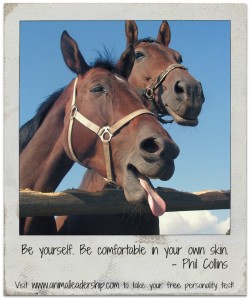
I have always felt pretty different than the mainstream. There was a short period in my life in my late teenage years where I tried to express that in the way I dressed, but for the most part it has always been an internal feeling. The funny thing is, I think the majority of people have the same feeling. Some express it with their appearance, and others just are less obvious. We are all different.
The Pressures Throughout Life
Living in your own skin can be difficult because there is sort of an assumed pressure to be like everyone else. That pressure goes through early childhood to retirement. Maybe you can remember that pressure in school that made you feel you needed the same stuff as your classmates. Maybe you’re at the point in your life where you feel you need the same minivan or same retirement plan as others. It is a strange pressure that pushes us without us really being aware of it. Maybe it is because in the natural world, if you’re too different and stand out, you may become the focus of predators. For whatever reason the pressure is there, but often the people I enjoy most are the ones who are truly comfortable in their skin.
Animal Leadership and You
So this is a big part of what Animal Leadership is all about. It is what I speak to groups about. Knowing who you are and playing to your strengths. Now I am realizing it is even deeper that just personality, it is a wonderful mixture of what you like to do, wear, how you want to live, how you express yourself. All this is important to who you are, your identity, and it is okay to do things differently than other people, to live in your skin.
Our Differences Make Us the Same
The funny thing is, we all desire to be a little different and then we gravitate to all the other different people who are like us. Ironic, but it allows us to be accepted. This acceptance leads back to the pressure to be like others. So for this week I am giving you a challenge, and permission if you need it, to live in your skin.
Do what you want to do. If you are the ultimate Bohemian and hang in this community but you want to start saving for retirement, go for it. If you are a suit and tie guy but have a desire to go barefoot through the park, go for it. If you are hiding who you are, come on out and show the world the beautiful person you are! Living in your skin is freeing and will bring out your best. You will be happier, perform better, and be proud of who you are. So live in your skin, it’s beautiful.
Until next time, keep leading!
-Rad
Next week: Connecting with others in the way they like to be connected with.
]]>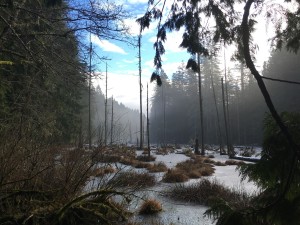
On a drive through to town the other day I almost hit a bear! In the summer, people come from across the country to enjoy this area because of its natural beauty and the 2,500 lakes that freckle Oneida and Vilas county (just 2 of the 72 counties in Wisconsin). I live in the 3rd most lake-rich area of the world, and the lakes are fresh and clean because of our natural wooded landscape and the extensive wetlands here.
A Unique Recreational Atmosphere
It’s not all bird watching and canoeing though, people go on pontoon boat cocktail cruises, fish, and waterski. In fact, in my teens I was part of a waterski show that preformed 3 nights a week. So it is the combination of a wilderness feel with recreational atmosphere that people like so much. It is really something you don’t see too many places.
So this is where I live year round, but in the summer we move from our 7-acre off-water property to an island just a quarter mile down the road. The island is very old school, very primitive compared to most places on the lake. There is no landscaping of any kind, no lawns, just natural shoreline. The primitive condition of the island is why there is so much wildlife here. We have a lot of undeveloped habitat in a natural condition and that is why we have had eagle’s nests, otter’s dens, and even loon’s nests on the island.
Three Pieces of Habitat
What a lot of people don’t understand about habitat is there are sort of three big pieces to it. The first is just sheer volume of habitat. The more the merrier. The second is the less fragmented, the better. That means the less the habitat is cut into smaller pieces by roads, towns, gravel pits, etc. the better. The third, and this is where we as land owners usually screw up, is that structure is really important. Structure is like the furniture in a room. You could have a dance hall worth of space but without some furniture it won’t be fun to hang out in very long. So with habitat, you need layers going from the ground up to the tree tops. Things like rotting logs on the ground, rocks, bushes, brush piles, trees, standing dead trees, all add to the quality of habitat. Fishermen get this and that is why they fish by weed beds, coral reefs, logs in the water, and when all else fails they make fish cribs and add them to the water. Structure is really important.
When it comes to structure, humans often have a hard time with it. We find it messy and we clean it up, we clear it. I am guilty of this too, and as a horse person, I have a far reaching impact on with regards to the extent I clear land (although I don’t have any real pasture and my horses do have to live in the woods). However, we do plant lawns and clear brush. The point I am trying to make is, what you do on the land matters, and around our houses we tend to simplify habitat.
Changes to Zoning Laws
So recently many of the laws have changed in Wisconsin. We actually passed a law that said that no municipality could have regulations protecting the environment that were more protective than the state standards. That means that a local Northwoods community can do nothing to decide to protect their lakes from greater development than we see in the City of Milwaukee. That means that municipalities could not restrict mining operations in their small towns if the overall state standards allowed for mining operations. Now, I am all for regulations that allow a lot of flexibility for landowners and where people are not caught in the red tape of bureaucracy every time they want to do something with their land, but an anything-goes policy on land development is dangerous for habitat and things that cannot be replaced disappear quickly.
Last week, our local newspaper, Lakeland Times, ran an article called “The Pendulum Swings” talking about all the changes to shoreland zoning. It basically outlined the anything-goes mentality of the current standards. Ironically, this article was in the outdoors section of the paper with all the cute stories of tourists enjoying nature. To me, it seemed like there should be a call to action to let people realize that our shields are down and the starship is under attack, and it just got me thinking all week long that we may be heading for a bit of trouble.
The Landscape of Being a Leader
So, I don’t write to promote a political agenda. And, as much as it may seem like it, I am not writing just to vent. I am writing because, sometimes to be a leader means that you need to share your experiences and work to protect others. For years, I studied natural resources. I earned a master’s degree in forestry with a focus on landscape ecology. I worked with wildlife, plant, land-use planning, restoration, endangered species, multiple-use, and I feel I have a deep understanding of what’s at stake with some of these issues. Just like I would look to an economist for economic advice, or an MD for medical advice, I want to share insight on these natural resource issues. So, I am writing today just to encourage everyone to think about what is going on in your community. What sort of demands are we are putting on the natural landscape we live in? Think about how this is affecting habitat. What sort of choices are you making that affect habitat composition and function?
You see, at least around here, nature is not just a splendid backdrop, but the backbone of our tourist-based economy. The choices we make matter. This is true for anyone who breathes air and drinks water. So, this week I ask as you run around enjoying summer, that you take a moment and think about how you are going to be a leader and protect what we love for all of us and future generations. Happy travels.
Keep leading,
Rad
As you hike in a wilderness area you wind around this bend and that. You zigzag up switch backs, and maybe even traverse talus slopes. The real decisive point in your whole journey comes when you hit the split in the trail and the signs point to two different destinations. How do you know where to go?
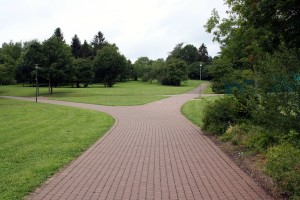
Well, if you were at all prepared for your trip, you brought a map, or at least looked at a map and planned your route. That’s what you do when you go hiking. If you’re in big wilderness country and you have not planned a route, then your decision at that simple split in the road may be the difference as to what state you wind up in. It can be the difference to whether or not you get water that day. It could be the difference between sleeping on an exposed snowfield or in a nice sheltered forest. In big wilderness you NEED a map.
Do You Have a Map? You Need One!
I don’t think I am saying anything shocking here, but ironically, as we move through our lives, we rarely have things mapped out. We wind through this challenge and that. We zigzag between career and home-life. We traverse financial obstacles, but we really don’t have any sort of map. And let me tell you something, we are in BIG wilderness!
Isn’t it funny that on a little recreational escape we will plan meals, make sure our pack has everything we could need, and even carry things for emergencies, yet… in daily life, we just sort of head off. In the book Animal Leadership: Leadership Learned from Wildlife for Leading Yourself and Others, I describe the four animal personalities. The Eagle is the one with the most planned out vision, whereas the Wolf is probably the most spontaneous and carefree in daily actions (if you want to see what you are take the FREE test at www.AnimalLeadership.com). Maybe some Eagle-people do have a plan for their lives, although I doubt many, and almost certainly most Wolf-people do not. Do you?
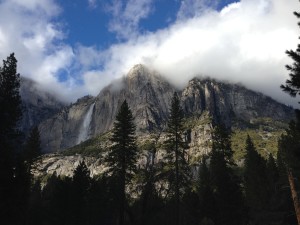
Map Your Plan, Prioritize
As a natural resource professional, I have studied plenty of plans. For a couple of years, working as a Senior Scientist for a consulting company, all I really did was write strategic plans for citizen groups who were looking to manage local resources. The concepts applied basically boil down to knowing your priorities, identifying your resources, and deciding what actions you will take. This is the map to negotiate the wilderness. Yet, how many of us lay that out for our own lives?
Mapping out your priorities can be one of the most important things we do. Steven Covey, the designer of the famous Franklin Covey Planner, talks about sharpening the axe before you begin to chop the tree. It is defining our priorities that he refers to. It is mapping our course which makes the difference in what we are really capable of achieving. Everyone has the same 24 hours in a day, yet some people never have time while others accomplish great things. Some can have a blast spending time in the wilderness, while others just feel lost.
There are many great tools for designing your map. I’ll talk more about that in next week’s blog. For now, I want you to ponder the idea of even having a map. Do you? Do you know where you’re going, or even where you’re hoping to wind up? Let’s build a map together. Let’s become determined to achieve some direction so we can enjoy our travels through this beautiful wilderness. Let me know what tools you come up with to build your map. There is nothing like looking out from a mountain top to a vast sea of wild, especially if you decisively and determinedly got there, and know how to get down.
Keep mapping,
Rad
This month I have been focusing on lessons learned from horses. This is a big part of my life these days and I am actually working on a new book that will explore leadership lessons learned from horses. There are two lessons from horsemanship that have proven to be very helpful to me lately. The first has to do with requests we put on the horse and the second has to do with expected outcomes.

The Cues We Give
Sometimes we give a horse a cue to perform a movement, and if it doesn’t respond right away so we increase the cue. A cue is our way of requesting the horse do something and it is usually amplified by some degree of irritation. Simply put, if at first the cue doesn’t work, human nature leads us to increase the level of irritation associated with the cue, until the horse responds with the correct answer.
What I have found while riding is if you don’t give the horse time to respond, you might increase the irritation when the horse is already trying. The horse can then get frustrated and foul tempered. The lesson here is to make a request and see how it plays out, give the other individual time to digest the information and respond. This is especially true when teaching. There is a saying that you should never discipline a horse who is trying. This is true in so many aspects of human interactions too.
A Second Lesson
The second lesson relates directly to the first, and is a pillar of good horsemanship. That is patience. Patience is one of the keys to working with a horse. Often when working with a horse, things do not go as you hope they might. Sometimes you want to have a certain outcome and it is just not happening. It is easy to get frustrated and even mad at the horse, but this is always the wrong thing to do. You must be patient.
The horse will usually try to do what you are asking if it understands and doesn’t have other things on its mind. Sometimes it does, and things just don’t work out for you. In these cases, you don’t want to freak out on, yell at, or beat up your horse. You want to be patient, and go back to a place where you know things will be good. From there you can see if you’re ready for the next step, or if you need to break it down some more.
I can remember days where I had an allotted an hour to go for a trail ride but my horse did not want to leave the barn. Instead of riding the trail that day we might work on walking 10 feet away from the barn, and back to the barn. Then 11 feet, and back. Then 12 feet, and back. You get the picture. You want to leave at a good spot, not a fight.
Practice Patience
So this week as you are interacting with family, friends, and colleagues, practice letting them have time to react to you before you make assumptions about what they need or mean. Also, practice patience and if you for some reason don’t see eye-to-eye, get back to a place of mutual understanding and leave it there. You don’t have to always win in healthy relationships.
Good luck with these lessons, and feel free to contact me if you ever feel like visiting my pasture and horsing around. It is amazing what working with these animals can teach us.
Keep leading,
Rad